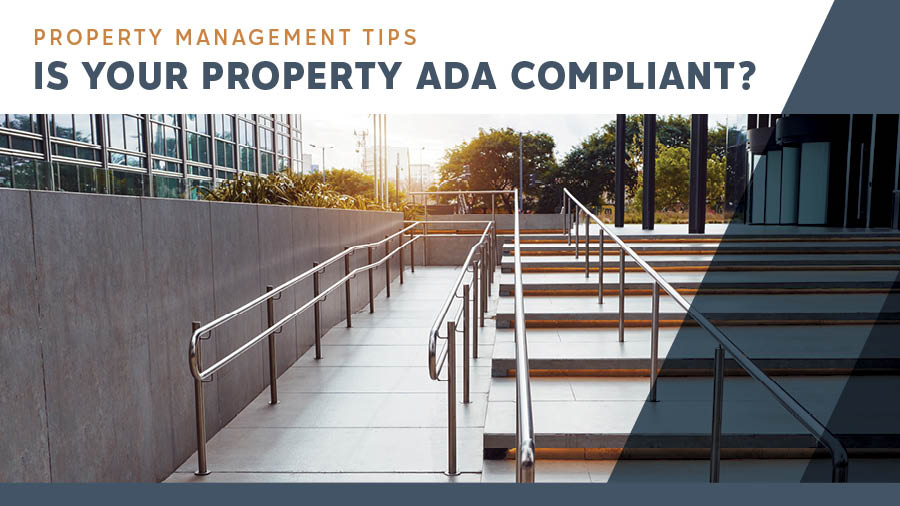
Avoid ADA Lawsuits: Key Compliance Tips for CA Property Owners
In navigating the complex landscape of Americans with Disabilities Act (ADA) compliance, the experienced team at GM Properties is dedicated to safeguarding the interests of property owners, whether managing older or newer buildings. It’s imperative to recognize that although the ADA laws have not changed significantly, the standards and specifications that define how they are enforced have evolved over the years. Initiated in 1991, the ADA Standards for Accessible Design, ratified by the U.S. Department of Justice, expanded the ADA’s requirements. Contrary to common belief, there is no grandfather clause within the Americans with Disabilities Act, thus requiring older structures to undertake significant modifications, often entailing substantial financial investments. Non-compliance with ADA regulations can have far-reaching consequences for property owners, particularly in California where litigation rates are notably high.
The GM Properties team offers insightful recommendations for addressing ADA compliance:
UNDERSTANDING ADA DISCREPANCIES
Entities that are occupied by public-facing tenants are most at risk for ADA-related lawsuits, particularly any type of retail center. Being found non-compliant in this sector can result in hefty financial penalties and reputational damage.
Often in these cases, both parties may opt for settlement to circumvent exorbitant legal costs and avoid litigation. However, settlements outside of court do not solve the underlying non-conforming issues that exist. Thus, the cost of rectifying ADA discrepancies can range from hundreds of dollars to hundreds of thousands of dollars.
PROACTIVELY MITIGATING ADA LITIGATION
Adopting a comprehensive strategy, owners can commission a Certified Access Specialist (CASp) report to comprehensively evaluate ADA deficiencies within their properties. Nonetheless, it’s crucial to acknowledge the potential financial implications of this approach. Opting to disregard recommended modifications can prove detrimental in legal proceedings, potentially resulting in adverse rulings and substantial financial ramifications. Alternatively, property managers can conduct site walk-throughs to identify visible concerns, subsequently soliciting assessments from specialists to pinpoint additional areas of risk, often at minimal or no cost. Property owners must proactively address ADA discrepancies to uphold their legal obligations and at the same time mitigate the risk of litigation by people who seek to exploit legal avenues for financial gain.
KEY CONSIDERATIONS FOR ADA COMPLIANCE IN CALIFORNIA
In addition to traditional ADA compliance measures, California property owners should also consider the following points. Please check with Title 24 Building Codes to confirm all guidelines as requirements may change over time.
- Accessible Parking: Ensure there are adequate accessible parking spaces on your property, adhering to ADA mandates of at least one space per every 25 stalls in parking lots. Place loading zones of at least 96 inches wide next to ADA stalls to provide access for wheelchairs. Keep in mind the slope of parking stalls must also adhere to the regulations.
- ADA Parking Signage: Hang sufficient ADA signage both at the parking stalls and the parking lot entry to clearly indicate accessible spaces and routes.
- Parking Lot Pathways: Paint a path of travel in the parking lot — blue and white cross hatch — to indicate safe space for parking lot crossing.
- Slope of Entry Ramps: Entry ramps for public and commercial properties must adhere to specific slope requirements outlined in ADA guidelines, and may be different in California from national standards.
- Door Width and Clearance: Entrances and doorways must provide adequate width and clearance to accommodate wheelchairs and mobility aids. In California, doorways should have a minimum clear opening width of 32 inches when the door is open at 90 degrees.
- Handrail Requirements: Handrails are essential for providing stability and support for individuals with mobility impairments. In California, handrails must meet specific height and graspability requirements to ensure accessibility and safety.
- Restroom Accessibility: Restroom facilities must be designed to accommodate individuals with disabilities, including accessible stall dimensions, grab bars, and maneuvering space. California’s accessibility standards outline detailed requirements for restroom design and layout to ensure compliance.
- Elevator Accessibility: If a property includes elevators, they must be accessible to individuals with disabilities, including features such as audible announcements, Braille signage, and accessible controls. California regulations stipulate specific requirements for elevator design and operation to facilitate equal access for all individuals.
By proactively addressing ADA compliance issues and staying informed about evolving standards and regulations, property owners in California can safeguard their investments and ensure their properties are compliant and avoid litigation. At GM Properties, we remain dedicated to assisting property owners in navigating the complex landscape of ADA compliance, ensuring their properties are accessible to all.
For additional information on requirements, please refer to: ADA Standards for Accessible Design: U.S. Department of Justice – ADA website and California’s Title 24 Building Code: California Building Standards Commission website.
_______________________
